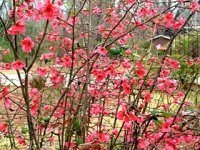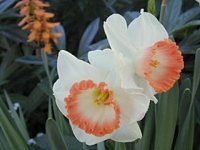It's Rose Pruning Time
America's favorite flower, the rose, touches the senses with pure joy, color, and fragrance. Caring for them begins now with proper pruning for each type.
Pruning Pointers
Hybrid tea roses are the commonly available rose, and if you are willing to do the work they require, they will reward you with spectacular large flowers. Cut them back to 18 inches tall, leaving only the thickest canes.
The large category of shrub roses encompasses a wide array of both old and new rose varieties. In general, shrub roses should be pruned back by one third of their height and spread to maintain their spot in the garden.
China roses (like the butterfly rose and 'Old Blush') are repeat bloomers, long a favorite of southern gardeners for their tolerance of our conditions. Prune chinas only as needed to remove dead limbs in winter and clip them a bit after each flush of bloom.
Polyanthas like 'Sweetheart Rose', 'Cecile Brunner', and 'The Fairy' will grow leggy without annual pruning, as will the Noisette types and Meidiland roses. First cut out any dead or twiggy stems, then shorten each remaining cane by one third. Angle the cuts so they slope slightly away from the center of the plant.
If your roses didn't perform well last year, consider also thinning the number of canes. Cut weaker ones or those that dominate the center of the plant down to the ground and remove them completely. More sunlight will get into the lower part of the rose plant to promote new leaves that can support more flowers.
Spread a blanket of compost around each pruned rose, followed in a month by a dose of rose food.
Matching Roses to Climate
Among the most important decisions a gardener makes is which roses to plant. When reading labels or rose descriptions in catalogs or online, look closely to see that the variety or group you are considering can be grown in zones 8-10. The northern reach of our southern coasts region brushes zone 8, and the tropical region fills zone 10.
Read more from The National Gardening Assocation.







